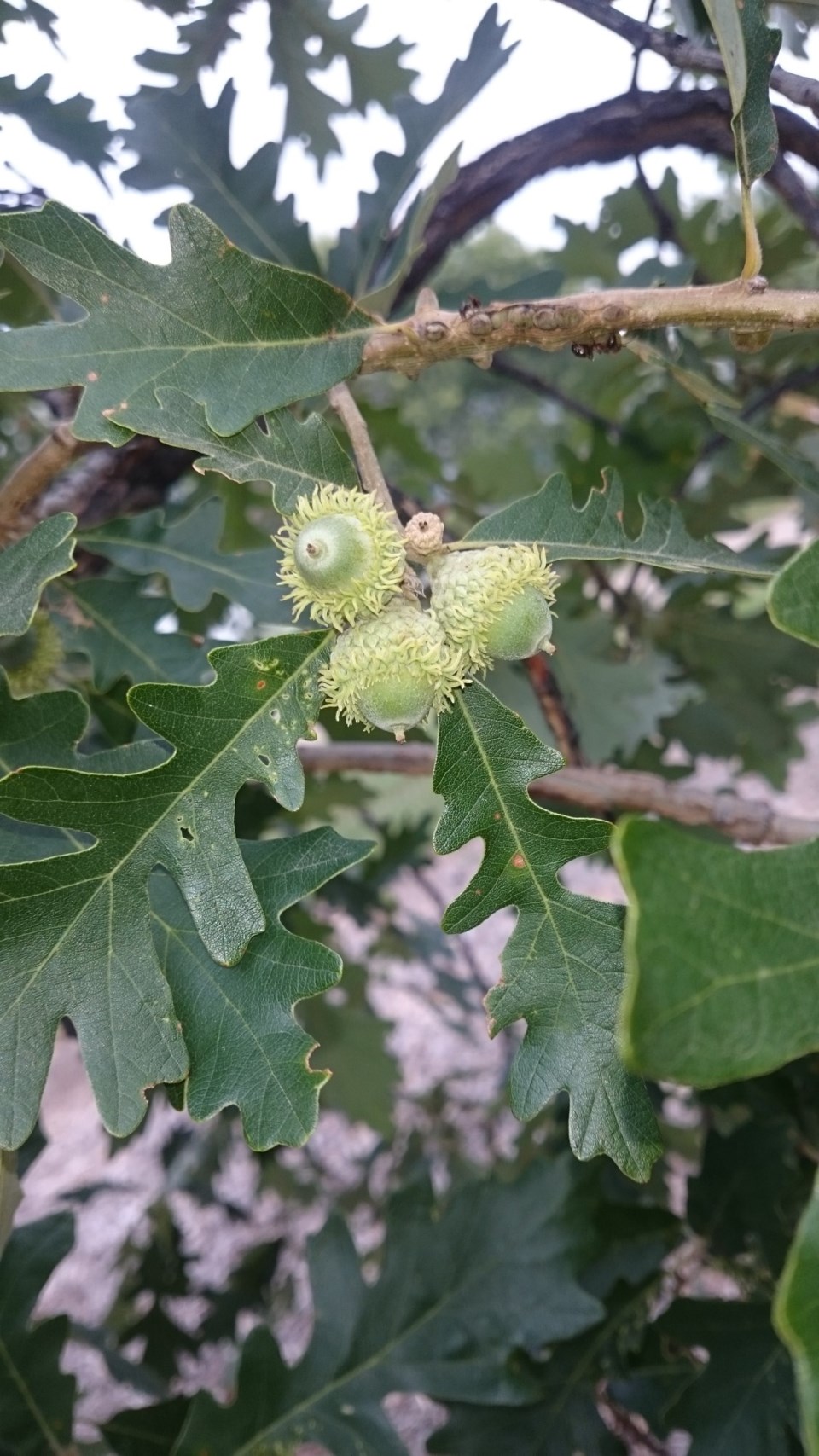Oak trees have one of the widest geographical ranges of all trees. Oaks are distributed throughout the temperate regions of both hemispheres. There are nearly 500 different species of oak worldwide.
On the prairies, the most reliable oak to grow is the Bur Oak (Quercus macrocarpa). The natural range of the bur oak runs from New Brunswick right down to south-eastern Saskatchewan. You will see some magnificent specimens of bur oak growing naturally in our very own Qu’Appelle Valley. Bur oak does not like to have wet feet and prefers moist but well-drained sandy or clay loam soils. They are the most drought-resistant of all the oaks and can weather periodic dry conditions quite well.
The bur oak is a true survivor and a good choice for any landscape on the prairies. In the early days when prairie fires would sweep across the land, the bur oak was able to survive because its bark is actually fire resistant. The bark of the bur oak is thick and corky which acts as a protective layer when subjected to intense but short-term heat that prairie fires are known for.
I often hear from people – oak trees are hardwood trees – don’t they grow slowly? Bur oak actually will grow quite quickly if given adequate moisture. So, if you want a mighty oak in less time – then simply ensure that water is not a limiting factor during the growing season. The bur oak is long-lived for many reasons. The root system of a bur oak is very deep and wide spreading but it also does have a very prominent tap root. Try to plant your bur oak in the spot where it will stay. Growth of the root is rapid, with the tap root growing as much as a metre within the first year.
The wood is considered similar to the other white oaks and has always been favoured for construction of floors, veneers, boats, furniture and whiskey barrels. The wood is heavy, durable and beautifully grained and has the added value of giving wines and whiskeys that hint of superior oak flavour during the aging process.
One of my favourite parts of the oak tree is the acorn. A nice little oval nut with a hairy cap! Bur oak acorns are considered a sweet acorn and have fairly low tannic acid content. These nuts are a favourite of squirrels, deer, bluejays and even magpies. Bluejays can carry up to five acorns at a time, one in their mouth, one at the tip of the bill and two or three in a specialized pouch in their throat.
The germination rate of bur oak acorns is extremely high (usually over 90%) so for those wishing to “grow their mighty oak” it is relatively easy. Collect your “seed” in the early autumn – mid-September is usually fine. The easiest way to grow your oak is to plant them in your garden at this time. If you choose to store your seeds for later planting store them in your refrigerator in a poly bag to retain their high moisture content and thus high viability. Last but not least, search underneath an oak and you will likely find several tiny seedlings happily growing that do not mind 小蓝视频 transplanted.
As you can glean from this article, I am a lover of the mighty bur oak. Any tree that lives for hundreds of years is worthy of any place in the landscape. That longevity coupled with an enviable root system, beautiful fall colour and acorns to boot make the bur oak a sure-fire winner! I hope to see the bur oak as a standard addition to every prairie landscape. Good luck with your mighty oak!
Hanbidge is the Lead Horticulturist with Orchid Horticulture. Find us at ; by email at [email protected]; on Facebook @orchidhort and Instagram at #orchidhort. Tune into GROW Live on our Facebook page or check out the Youtube channel GROW
SASKTODAY.ca, Saskatchewan's home page, at this link.



